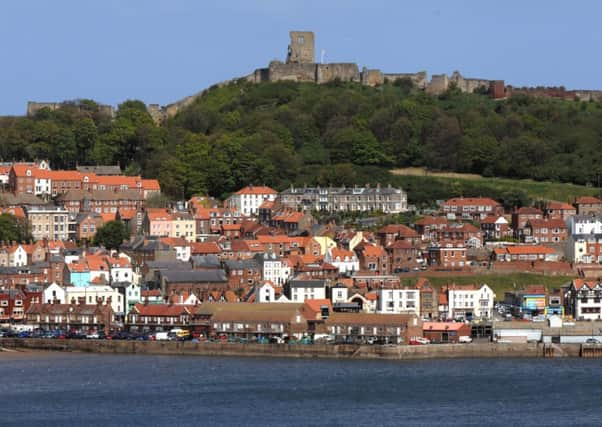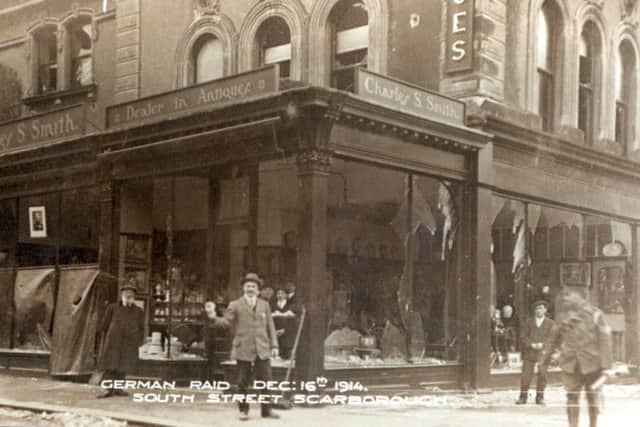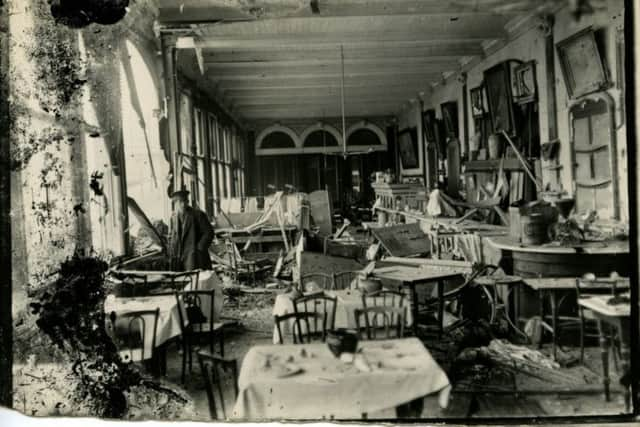Events in Scarborough that bring home the tragedy of war


Experts say the bombardment which killed eighteen people in Scarborough including a postman, delivery driver, children, a baby and a Boy Scout at the beginning of the Great War was designed to intimidate the British people. But it fact it did the very opposite. It is believed to be the closest the German forces came to mainland Britain.
Such was the scale of revulsion at the killing of innocent people going about their lives so close to home well away from faraway battlefields that many signed-up to fight.
Advertisement
Hide AdAdvertisement
Hide AdMark Vesey, chairman of the Scarborough Maritime Heritage Centre said: “There were 776 shells fired from two battle cruisers in thirty minutes.


“It really smothered the town from end to end. It caused a lot of damage hundreds of homes were destroyed. It was devastation.
“It was really shocking. It can only be put in terms of a 9/11 I think in terms of our experiences today,” Mr Vesey added.
Among the victims of events on December 16 1914 was fourteen-month-old John Ryalls, prompting Winston Churchill to coin the phrase that damned the German Navy as “The baby killers of Scarborough.”
Advertisement
Hide AdAdvertisement
Hide AdNow a search for relatives of those who died is underway to attend events on Tuesday, December 16, being held to commemorate the 100th anniversary of the atrocity. There will be an early morning civic ceremony, organised by Scarborough Borough Council, during which a maroon will be fired from Scarborough Castle, to simulate the 1914 attack, after the name of each individual that perished is read out.


Scarborough Castle will also be lit up during the ceremony and a flotilla of boats will be stationed outside the harbour.
“In a way it backfired on the Germans because it caused more and more people to join the army because they were so outraged that this had happened,” Mr Vesey said of the attack.
He says the shelling caused utter devastation. Buildings were destroyed in road after road, streets were left littered with debris and landmark buildings including the Grand Hotel were affected. The Germans also targeted Hartlepool and Whitby.
Advertisement
Hide AdAdvertisement
Hide AdThe South Cliff area of Scarborough was the first site to be hit where people were killed. On the corner of South Street, shop porter, Leonard Ellis, 49, died when he was opening the door of a chemist shop. A second shell exploded a few yards away, outside the premises of William C Land & Co, where 45-year-old Harry Frith, the company’s driver, died.
At 38 Esplanade, Alice Duffield had set off in pursuit of her husband who had gone to use a telephone during what they thought was a gap in the firing. She reached the Granville Private Hotel but died on the steps when a shrapnel shell exploded directly above her.
Postman Alfred Beal was killed as he delivered mail while other victims included George Taylor, 15, who was the only Boy Scout to die during the conflict.
Anyone who is a relative of any of the eighteen victims should email Mr Vesey at: [email protected].